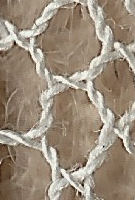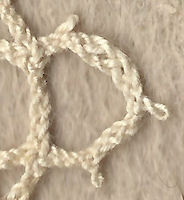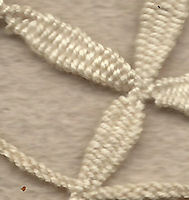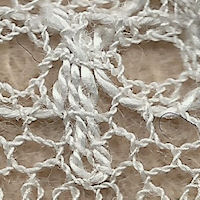





Bobbin lace started to be made from the sixteenth century. In England, lacemaking was a cottage industry in the East Midlands counties such as Bedfordshire, in Buckinghamshire, and in Honiton, Devon, although it was made elsewhere as well. Lacemaking machines started in the nineteenth century. They could make lace far cheaper so lacemaking started to decline.
Machine-made lace often imitated bobbin lace, as they were in direct competition. The machines got better over time, and sometimes it can be very difficult to tell if a piece if hand-made or machine-made. However, much machine lace uses threads in a different way to bobbin lace, which can help identification.
Cloth stitch |
Half stitch |
Rose ground |
Bucks Point ground |
Footsides |
Picots |
Legs/plaits/brides |
Tallies |
Gimps |
Picot and cloth headside |
| This shows the equipment used for making bobbin lace. There are only 11 pairs of bobbins here which makes a very narrow piece of lace. There can be dozens or even hundreds of bobbins used. But there is a limit as to how wide a piece of lace can be made.
|
This shows one type of lace making machine. The white roll to the left of the machine is the program for the lace pattern. The maximum width of lace is the width of the machine.
|
UK companies making machine lace:Swisstulle makes Bobbinet laceCluny Lace makes Leavers lace Malmic Lave makes Barmen lace |
Return to Lace Collection index
© Jo Edkins 2014